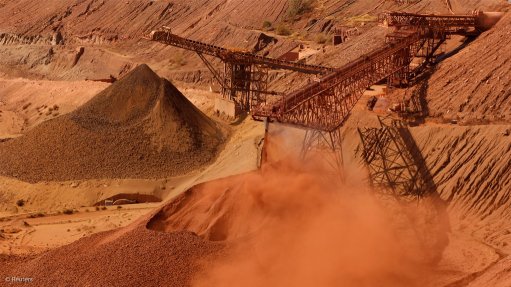
Photo by: Reuters
PERTH (miningweekly.com) – Mining giant BHP Billiton was expecting China’s long-term steel output to increase, driving the continued demand for iron-ore.
BHP’s Western Australian iron-ore asset president, Edgar Basto, said on Tuesday that Chinese steel production was expected to peak in the 2020s at about 935-million tonnes to 985-milllion tonnes, from around the current 800-million tonnes.
“The trajectory of further demand growth into the 2020s reflects the fact that China is still a developing economy, with steel stock at five tonnes per capita. This is approximately half the level of developed countries, implying that there will be sustained incremental steel demand growth,” Basto said at the Global Iron Ore and Steel Forecast, held in Perth.
He added that the replacement of old stocks and exports would also be key drivers of long-term steel production.
“By sector, we believe that while construction steel demand in China might have peaked, manufacturing sectors like machinery, automotive industry and home appliances will maintain a sustainable growth outlook.”
In the short term, BHP expected the Chinese government’s restructuring plans, to deal with over-capacity issues, to take time to implement, with Basto adding that a reduction in excess capacity would mean improved sustainability over time.
However, variability was expected to remain in the short term.
“Overall steel and pig iron production are expected to be subdued in 2016; however, over the longer term, we continue to expect Chinese steel production to grow.”
On the supply side, Basto noted that Australian and Brazilian seaborne exports had increased by about 40% between 2010 and 2014, while some greenfield projects, which were still in their ramp-up and construction phases, would result in further supply to the seaborne market in the short to medium term.
“Lower-cost seaborne supply has gradually displaced higher-cost supply, initially displacing Chinese private mines production and more recently higher-cost seaborne supply.”
“It is evident that the supply side has proven to be price sensitive with prices returning to historical long term averages. This means we expect further price volatility in the short term.”
Basto told delegates that BHP had maintained its share of iron-ore exports since the beginning of the last decade, with the company focusing on decreasing production costs.
At its Western Australian iron-ore assets, BHP’s productivity drive, as well as favourable exchange rate movements, resulted in unit cash costs reducing by 47% since the beginning of 2013, to $15.2/t in the first half of 2016.
Efficiency improvements had also resulted in the iron-ore assets increasing production by some 6%, to a record 131-million tonnes in the first half of the 2016 financial year.
“We have further to go to reduce costs, and there is significantly more upside to come,” Basto said.